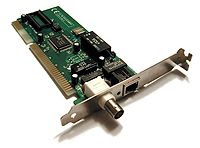

Installation Guidelines:
1.Purchase twisted-pair cable in prefabricated lengths, such as 50 feet, 75 feet, or 100 feet.
2.Always use a bit more cable than you need, especially if you’re running cable through walls.
3.When running cable, avoid sources of interference, such as fluorescent lights, big motors, X-ray machines, and so on.
4.The maximum allowable cable length between the hub and the computer is 100 meters (about 328 feet).
5.If you must run cable across the floor where people walk, cover the cable so that no one trips over it.
6.When running cables through walls, label each cable at both ends.
7.When several cables come together, tie them with plastic cable ties.
8.Cable ties have all sorts of useful purposes.
9.When running cable above suspended ceiling panels, use cable ties, hooks, or clamps to secure the cable to the actual ceiling or to the metal frame that supports the ceiling tiles.





 Crossover Cables is a cable that you can use to directly connect two devices without a hub or switch.
Crossover Cables is a cable that you can use to directly connect two devices without a hub or switch.





